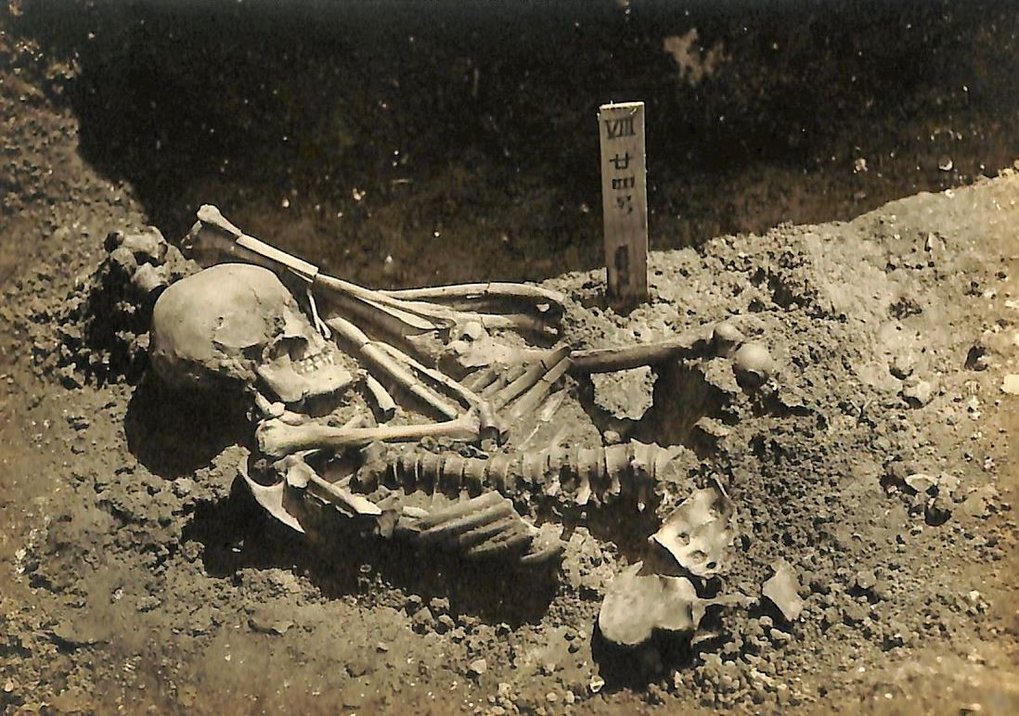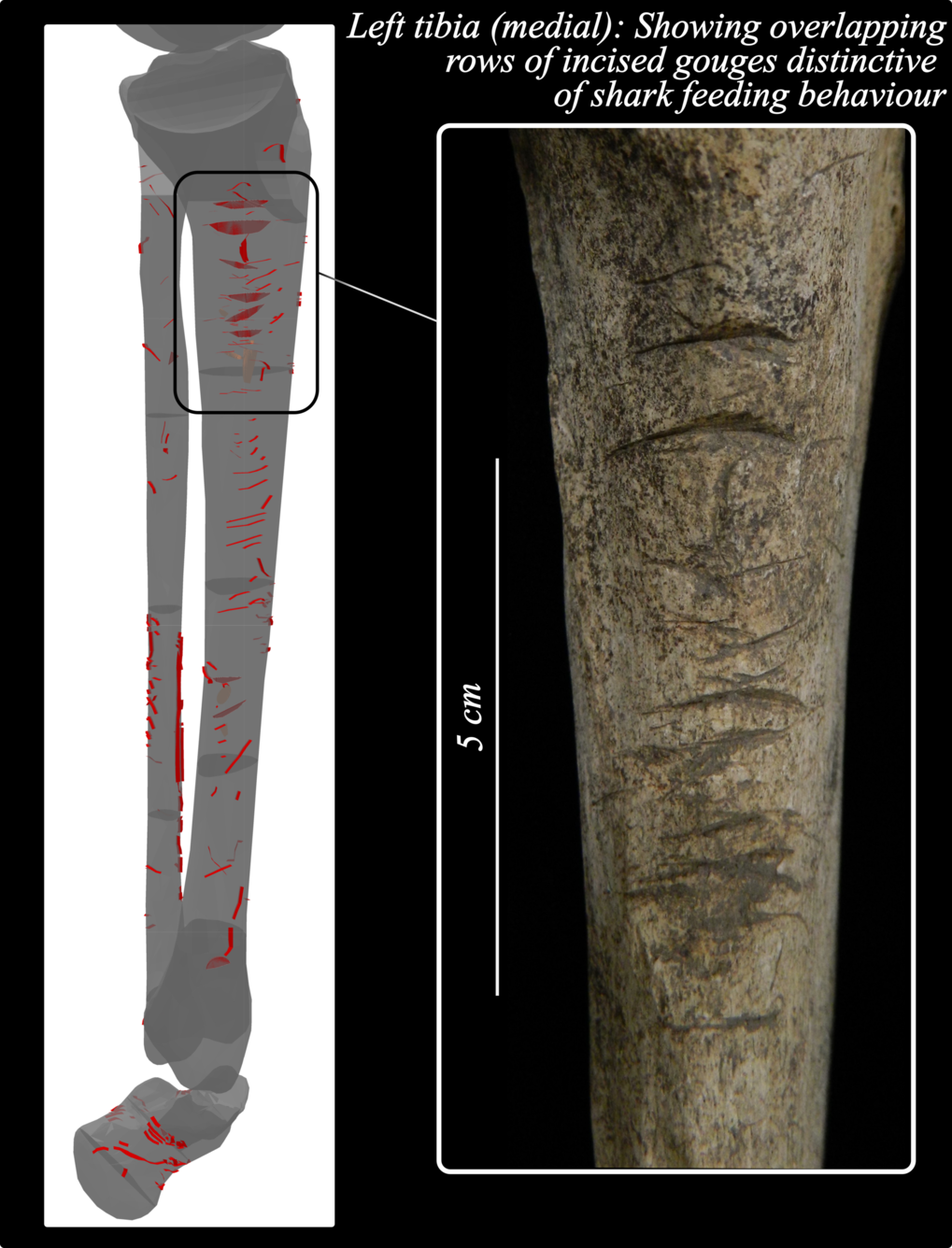With nearly 800 unique wounds, the victim's cause of death had eluded researchers for decades
A new study published in Journal of Archaeological Science: Reports describes a shark attack on an adult male radiocarbon dated to roughly 3000 years ago, during the fisher-hunter-gatherer Jōmon period of the Japanese archipelago

While investigating evidence for warfare among prehistoric hunter-gatherers in Japan, University of Oxford researchers J. Alyssa White and Rick J. Schulting came across the remains of a man covered with at least 790 traumatic lesions. The number, shape and distribution of the deep, serrated lesions perplexed the researchers, bearing little resemblance to the wounds usually found in victims of murder or warfare. Through a process of elimination, they ruled out human conflict as well as more commonly reported terrestrial animal predators or scavengers as the cause. What they were left with was the realisation that the culprit was none other than a shark.
The victim, individual No. 24 from the Tsukumo Shell-mound, is housed at Kyoto University and has puzzled researchers since first discovered over a century ago. As archaeological cases of shark attacks are extremely rare, White and Schulting turned to forensic cases of shark attacks for clues, ultimately consulting shark attack expert George Burgess, Director Emeritus of the Florida Program for Shark Research, who concurred with their assessment.
Reconstruction of the circumstances surrounding the attack was carried out by an international team. Radiocarbon analysis of the individual revealed that he died between 1370 and 1010 BC. The distribution of wounds strongly suggests that the victim was alive at the time of attack. His left hand and right leg were likely sheared off by the shark while the victim tried to defend himself, as they were not recovered with the rest of the remains.

In addition to missing a hand and right leg, excavation records for Tsukumo No. 24 confirm that his left leg, although present, was placed on top of his body in an inverted position. The shark species most likely responsible for the attack was determined to be either a tiger (Galeocerdo cuvier) or white shark (Carcharodon carcharias), based on the character of the tooth marks, the extent of the victim's wounds, and the sharks' feeding habits and distribution. A novel method of 3D analysis in development by Alyssa White, John Pouncett, and Rick Schulting was used to visualise the wounds found, which can be explored at Tsukumo 24 BodyMap 3D.
"The Neolithic people of Jōmon Japan exploited a range of marine resources. From the second millennium BC there seems to have been a new focus on large fish, perhaps to bring social status. It's not clear if Tsukumo 24 was deliberately targeting sharks or if the shark was attracted by blood or bait from other fish. Either way, this find not only provides a new perspective on ancient Japan, but is also a rare example of archaeologists being able to reconstruct a dramatic episode in the life of a prehistoric community" says co-author Dr. Mark Hudson, a researcher with the Archaeolinguistic Research Group in the Department of Archaeology, Max Planck Institute for the Science of Human History.
Although the researchers set out to understand the extent of violence in prehistory, the discovery of the 3,000 year-old shark attack victim reveals a softer side of human societies. Individual No. 24's body - except for a severed leg and hand - was recovered soon after the attack, most likely by his fishing companions, and buried in the cemetery at the Tsukumo Shell-mound, which may have been his home village.






